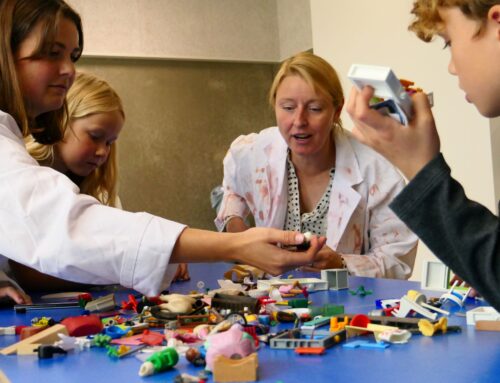By Lone Belling - author, speaker, management consultant and chair of the Kulturprinsens board - lifeleadership.com
Chronicle published in Avisen Danmark 11.2.20202
Can you play your way to higher grades? Paint your way to social intelligence? Sing out for a sense of community? Draw yourself to integration and good language development? Dance to a sense of responsibility for the whole?
The answer is yes! If you delve into the increasingly robust research in the field, it points to the potential of the arts for both individual and societal development. Provided, of course, that we value it in terms of financial and time resources.
We often think of art as the icing on the cake. What can be afforded when the health service, elderly care and day care centres have had theirs - not to mention investment in the necessary green transformation. This is reflected in the political awareness of the area at national, regional and local level. After all, art is an expense, a luxury. Or is it? Perhaps we should start to see it as a basic investment, with implications for social, economic and environmental sustainability.
When artistic subjects are an integral and essential part of education, it has a significant and measurable impact on how pupils perform in the education system, both in the short and long term, and most clearly for children from low socio-economic backgrounds. And pupils from other ethnic backgrounds also do significantly better according to the article 'Doing Well and Doing Good by Art' (2009)
In a world of growing inequality both between countries and within countries, efforts that benefit all children and especially uplift those from weaker socio-economic backgrounds become essential if we are to deliver on the agreed UN SDGs, including Goal 10 on reducing inequality and Goal 4 on ensuring that all children receive a quality education.
This is not only significant in distant countries, because inequality is also rising in Denmark. Looking at the Gini coefficient as a measure of our country's income inequality, it has risen 35% from 0.2 to 0.27 since 1990, which interacts with inequality in health, life expectancy, social and cultural capital.
But meeting artists and the language of art, expressing themselves in colour, movement and poetry in a way that is not just special events and something extra, but deeply integrated into the overall educational and formative process of the students, becomes crucial for how they go on in life. Not only in education and further in the labour market, but also for their engagement in civil society. For the arts develop our pro-social skills, such as caring, being helpful, being able to put ourselves in the place of others and giving space. This develops our social intelligence and our desire to contribute and be part of the community.
Art speaks not only to the head, but also to the heart, the senses and our entire existence. It opens us up to seeing ourselves as part of something bigger as a starting point for taking responsibility for that whole. Therefore, if we are to succeed in sustainable transformation in all its dimensions, it is essential that we understand at a deeper level that we are interconnected and interdependent across borders on this planet of limited resources.
We have a lot of knowledge and 'big data' about climate, economy, social issues and the evolution of the planet. But the facts mostly speak to our heads and can easily lead us into helplessness, rejection or fear because we can't see our way out of it. That's why we need 'Deep Data', a deep inner knowledge and anchoring, a heart formation from which we can navigate with our ethical compass and turn powerlessness into action.
Art can help us with that. Not that art should be action-oriented and only a tool for either career choice or green transition, but art can inspire action. Because it can move and touch us behind numbers and thinking, give expression to the unpredictable and help create the new future narratives of a good life lived in balance and respect for the natural base and other living beings - human and animal.
We know that green adults have been green children who have had life-giving and essential experiences of nature in their upbringing. But the future should not just be green, but painted in all colours. Let us therefore provide opportunities for colourful and art-enriched children and young people to take the whole palette into their adult lives for the benefit of themselves and society.
But since we can't wait for either the green or the colourful transition until the growing generation gets the vote and the power, I also hope that the arts will be given the chance to fulfil their potential to create ideas about the good life. Because we need attractive images of the future, they can push and inspire us all to take responsibility and action for a sustainable future.
Lone Belling's latest book "Sustainability - from moral pointer to ethical compass" published in November 2019 (Muusmanns Forlag).

